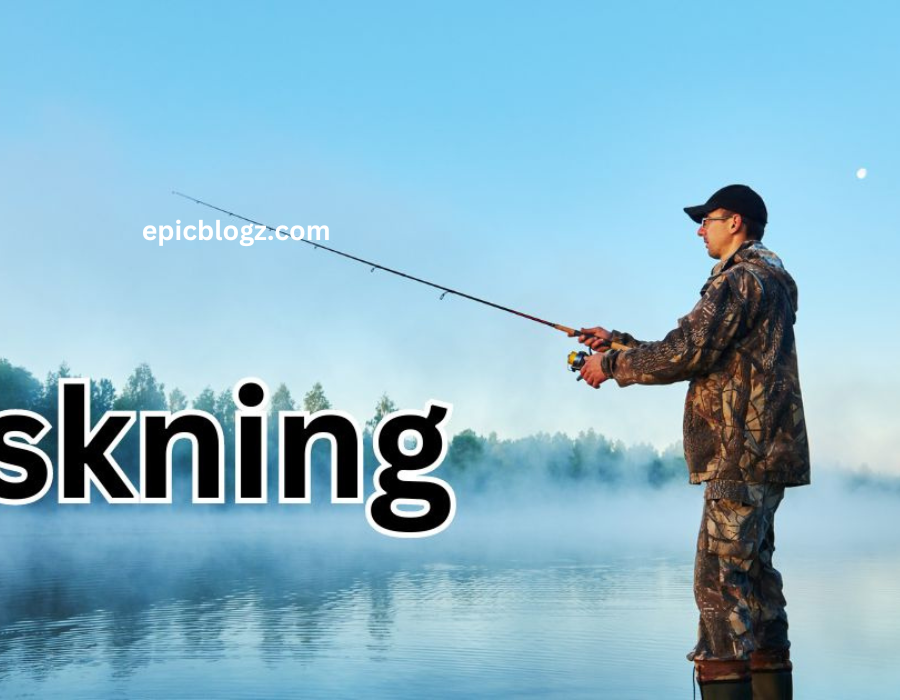Introduction to Fiskning
Fishing, or “fiskning” as it’s known in Swedish, is more than just a hobby; it’s a beloved pastime that connects people with nature and offers a chance to unwind. Whether you’re a seasoned angler or a beginner casting your first line, there are always tips and tricks to enhance your fishing experience. In this blog, we will explore essential fishing tips that cater to every angler’s needs, from choosing the right gear to understanding local regulations. Let’s dive in!
The Basics of Fishing
Understanding Different Fishing Techniques
Before you head out to the water, it’s crucial to familiarize yourself with various fishing techniques. Here are the most common methods:
- Fly Fishing: This technique uses lightweight lures called flies. It’s ideal for catching trout and other freshwater species.
- Spin Fishing: Utilizing spinning reels and lures, this method is versatile and great for beginners.
- Baitcasting: This technique requires skill but allows for greater control over your lure placement.
- Ice Fishing: A unique winter activity where anglers fish through holes cut in frozen lakes.
Each technique has its own set of skills and equipment, so choose one that resonates with your fishing style.
Selecting the Right Gear
The right gear can make all the difference in your fishing success. Here are some key components to consider:
- Rod and Reel: Choose a rod that matches your fishing style. Spinning rods are great for beginners, while baitcasting rods offer more control for experienced anglers.
- Line: The type of fishing line (monofilament, fluorocarbon, or braided) affects sensitivity and strength. Match the line to your target species.
- Hooks and Lures: Select hooks based on the size of the fish you’re targeting. Lures come in various shapes and colors; experiment to find what works best.
Essential Accessories
Don’t forget these accessories that can enhance your fishing experience:
- Tackle Box: Keep your gear organized with a tackle box that has compartments for lures, hooks, and other essentials.
- Fishing License: Always check local regulations regarding fishing licenses and permits. Compliance is crucial for conservation efforts.
- First Aid Kit: Accidents can happen; be prepared with a basic first aid kit for minor injuries.
Choosing the Right Location
Researching Local Waters
Before you cast your line, research local waters to understand where fish are most abundant. Here are some tips:
- Online Resources: Websites like Fishbrain or local fishing forums provide insights on popular spots and recent catches.
- Local Bait Shops: These shops often have knowledgeable staff who can recommend nearby fishing locations based on current conditions.
Seasonal Considerations
Fish behavior changes with the seasons, influencing where you should fish:
- Spring: As water temperatures rise, fish become more active. Look for them in shallow waters near spawning grounds.
- Summer: Fish seek cooler depths during hot weather. Early mornings or late evenings are prime times for fishing.
- Fall: Fish prepare for winter by feeding heavily. Target areas with abundant food sources like baitfish.
- Winter: Ice fishing becomes popular in colder regions. Focus on deeper waters where fish congregate.
Mastering Fishing Techniques
Casting Techniques
Proper casting is essential for successful fishing. Here are some techniques to master:
- Overhead Cast: The most common casting method; it involves swinging the rod overhead before releasing the line.
- Sidearm Cast: Useful for casting under branches or obstacles; keep the rod parallel to the water.
- Roll Cast: Ideal for tight spaces; this technique involves rolling the line forward without lifting it high.
Setting the Hook
Knowing when and how to set the hook is critical for landing fish:
- Feel the Bite: Pay attention to any tug on your line. This indicates a fish has taken your bait.
- Set the Hook Quickly: Use a swift upward motion to set the hook firmly in the fish’s mouth.
- Reel Steadily: Maintain tension while reeling in; avoid jerking or pulling too hard.
Playing the Fish
Once hooked, playing the fish correctly increases your chances of landing it:
- Stay Calm: Don’t panic if the fish pulls hard; let it tire itself out before reeling it in.
- Use Your Rod: Keep your rod at an angle to absorb shocks from the fish’s movements.
- Be Patient: Take your time; rushing can lead to losing the catch.
Understanding Fish Behavior
Feeding Patterns
Understanding when and what fish eat can significantly improve your success rate:
- Time of Day: Fish are often more active during dawn and dusk when they feed near the surface.
- Weather Conditions: Overcast days can lead to better fishing as fish feel safer moving into shallow waters.
Seasonal Migrations
Many species migrate based on seasonal changes:
- Bass Migration: Bass tend to move from deep waters to shallow areas during spring spawning seasons.
- Trout Movement: Trout may move upstream during spawning seasons or seek deeper pools during hot summer months.
Conservation Practices
Catch and Release
Practicing catch and release helps preserve fish populations for future generations:
- Use Barbless Hooks: These hooks minimize injury when releasing fish back into the water.
- Handle Carefully: Wet your hands before touching fish to protect their slime coating.
- Release Quickly: Minimize time out of water to increase survival chances.
Respecting Local Regulations
Always adhere to local fishing regulations regarding size limits, bag limits, and seasonal closures:
- Check local guidelines before heading out to ensure compliance with conservation efforts.
Safety Tips While Fishing
Staying Safe on Water
Safety should always be a priority while fishing:
- Wear a Life Jacket: If you’re fishing from a boat or kayak, always wear a life jacket.
- Check Weather Conditions: Before heading out, ensure you’re aware of any weather changes that could affect safety.
Personal Safety Measures
Take precautions to protect yourself while enjoying nature:
- Use sunscreen and wear appropriate clothing to shield yourself from sunburns.
- Stay hydrated by drinking plenty of water throughout your outing.
Conclusion
Fishing is an enriching experience that allows you to connect with nature while honing valuable skills. By following these tips—from selecting the right gear and mastering techniques to understanding local waters—you’ll enhance your chances of success on every trip. Remember that patience is key; every angler has stories of both triumphs and challenges on their journey.
FAQs
What essential gear do I need for fishing as a beginner?
For beginners, the essential gear includes a fishing rod and reel, fishing line, hooks, and lures or bait. A lightweight spinning rod and reel combo is user-friendly and versatile. Additionally, consider a tackle box to organize your equipment and pliers for handling hook.
How do I choose the right fishing line?
The choice of fishing line depends on the type of fish you are targeting and the fishing conditions. Monofilament lines are often recommended for beginners due to their ease of use and versatility. A 10-12 pound test line is suitable for most scenarios. Braided lines offer superior strength and sensitivity but can be more challenging to handle.
What are the best times to go fishing?
The best times to fish are typically during dawn and dusk when fish are most active. Weather conditions also play a role; overcast days can lead to better fishing as fish feel safer moving into shallow waters. Seasonal changes affect fish behavior, so it’s essential to adapt your strategy accordingly.
How can I practice catch and release effectively?
To practice catch and release responsibly, use barbless hooks to minimize injury, handle fish with wet hands to protect their slime coating, and release them quickly to increase their chances of survival. If a hook is deeply lodged, it’s better to cut the line rather than risk harming the fish further.
What safety measures should I take while fishing?
Always prioritize safety by wearing a life jacket if you’re on a boat, checking weather conditions before heading out, and bringing a well-stocked first-aid kit. Additionally, stay hydrated and use sunscreen to protect yourself from sun exposure during long hours outdoors.







